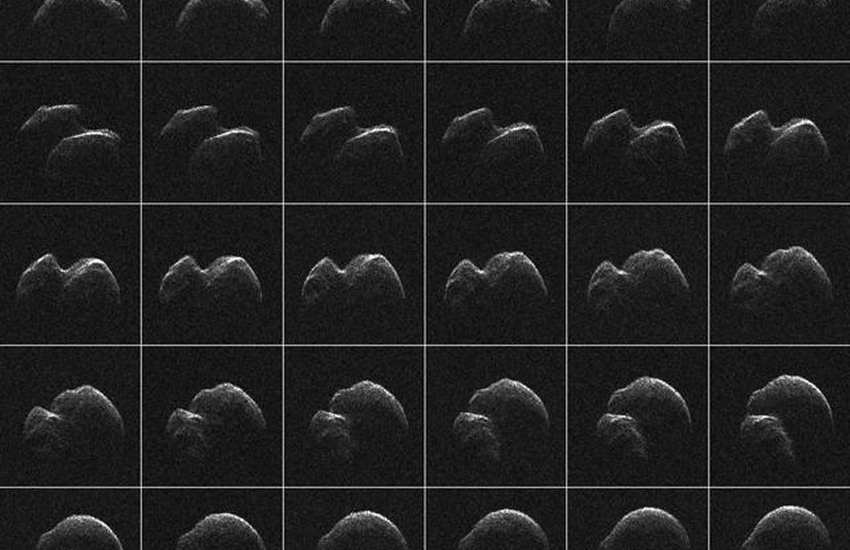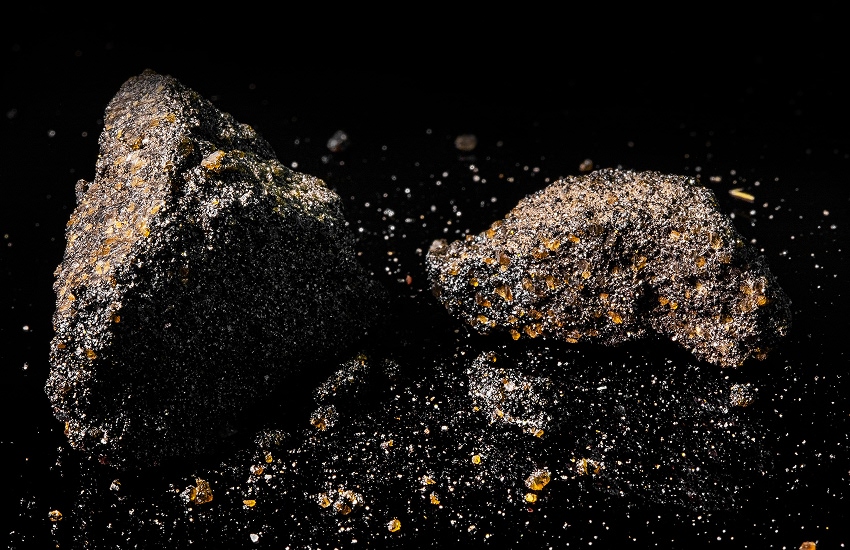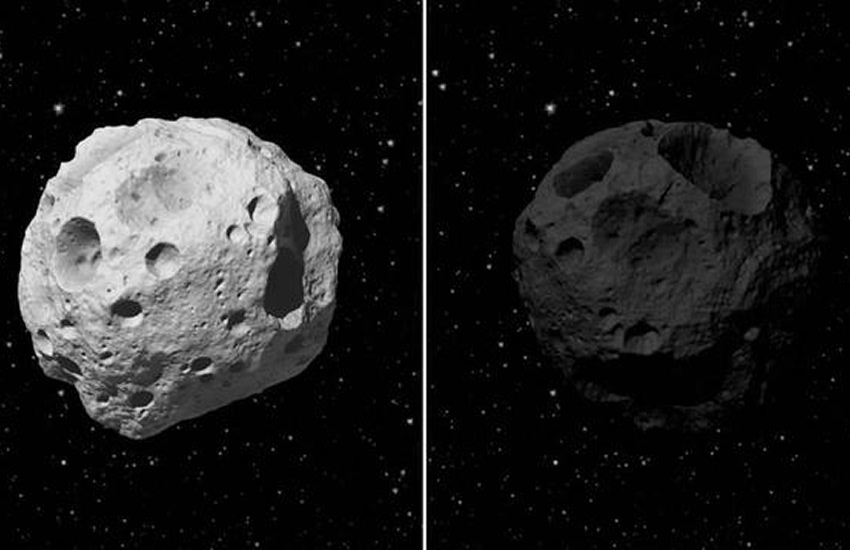Asteroids, the rock-like bodies orbiting our Sun, are a potential goldmine for future space exploration. With advancements in space mining technology, scientists and private companies are exploring how these celestial bodies could provide valuable resources to support human expansion beyond Earth.
But could asteroids really become the next frontier for resource extraction and possibly compete with the terrestrial mining industry? Let’s dive into the possibilities of asteroid mining and find out!
Types of Asteroids

Before we can understand the importance and the potential of asteroid mining, we must understand that not all asteroids are the same. Their formation process and composition play a key role in determining their resource potential.
In simplified terms, scientists categorize asteroids into three main types based on their makeup:
- C-type asteroids: These carbon-rich asteroids make up about 75% of known asteroids and are packed with volatile compounds like water, carbon, and organic molecules. They’re incredibly valuable for situ resource utilization because the water they contain can be extracted and split into hydrogen and oxygen, essential components for rocket fuel and life support systems. This could reduce the need to transport water from Earth, making long-term human exploration more feasible.
- S-type asteroids: These asteroids are dominated by silicate minerals but still contain a significant amount of metals by Earth’s standards, with 10-20% iron (Fe) and 1-3% nickel (Ni). While not as metal-rich as M-type asteroids, they still offer valuable resources that could be used for space infrastructure, including the construction of space stations, lunar bases, and spacecraft outside Earth’s gravity well. Utilizing these materials could help lay the foundation for long-term space exploration and industrial activity in orbit.
- M-type asteroids: These are the heavyweights of the asteroid world when it comes to base and precious metals. Rich in Iron, Nickel, Cobalt, Gold, PGMs, and Platinum Group Metals, such as platinum and palladium, these metallic asteroids contain materials that are rare and highly valuable on Earth. The concentration of Iron and Nickel in asteroids is significantly higher than what we find in terrestrial mining operations, making them a high-priority target for mining companies interested in expanding the future space industry.
It’s important to understand the composition of these asteroids so that scientists and private companies can better determine which ones hold the most promise for asteroid mining missions.
Why Mine Asteroids?
Asteroids are more than just space rocks – they hold a treasure trove of natural resources that could support future space exploration and human presence beyond Earth. While most raw materials from asteroids are expected to be used for in-situ resource utilization, some of the more valuable metals could eventually be brought back to Earth.
Let’s break it down:
-
Water Ice
Found in C-type asteroids, water is crucial for sustaining astronauts and can be split into hydrogen and oxygen to create certain types of rocket fuel. This process could significantly reduce the cost of long-duration space missions by eliminating the need to transport large amounts of fuel from Earth. Water is also essential for drinking and agricultural purposes in space habitats, making its availability a key factor in long-term human exploration.
-
Precious and Valuable Metals

M-type asteroids contain high concentrations of iron and nickel, which could be used in situ for building space infrastructure, spacecraft, and industrial operations beyond Earth. As a byproduct of this mining, Platinum Group Metals (PGMs), gold, and Rare Earth Elements (REEs) could potentially be brought back to Earth.
These metals have an extremely high value per kilogram, far exceeding the transport costs of launching them via rocket, making them some of the few space-mined materials that might justify export to Earth.
-
Other Raw Materials from Asteroid Mining

In addition to metals like iron and nickel, asteroid mining could also yield valuable by-products, including cobalt, copper, magnesium, carbon, and nitrogen. While metals like magnesium could be extracted from S-type asteroids, carbon, nitrogen, and hydrogen (essential for life support systems and future closed-loop ecosystems) may be sourced from C-type asteroids. These materials could support space-based manufacturing, structural development, and long-term human habitation, reducing the need to transport resources from Earth.
If properly harnessed, the abundance of water and metals in asteroids could dramatically reduce the need to transport materials from Earth, making deep-space missions more sustainable and cost-effective.
The Feasibility of Asteroid Mining
Mining asteroids might sound like science fiction, but it’s becoming an idea that scientists and companies are seriously considering. If successful, it would make space colonization much easier. But before we start hauling metal from the stars, there are some major challenges to tackle. Let’s see what’s being done to make asteroid mining operations a reality.
Technological Advancements
Developing the right technology is the first and most crucial step in making asteroid mining operations feasible. Scientists and engineers are working on a range of innovations to overcome current hurdles, ensure efficient extraction, processing, and transportation of resources from space.
3 steps we need to master to mine asteroids:
1. Remote Sensing
Not all asteroids are created equal – some contain metal-rich deposits, while others are dominated by carbon compounds or silicates. Remote sensing techniques, such as radar observations and spectral analysis, help classify asteroid types and predict their composition before we send missions to investigate them up close.
2. Sampling
Once a promising asteroid is identified, the next step is to physically sample its material. Sample return missions, like NASA’s OSIRIS-REx and Japan’s Hayabusa2, have already retrieved asteroid material, providing key insights into composition and structure. These samples help scientists estimate metal percentages and determine if mining could be economically viable, whether the value of extracted metals would outweigh mining and exploration costs.
3. Mining
The final step – actual asteroid mining – has yet to be tested. With low gravity and no atmosphere, traditional Earth-based methods won’t work. Engineers are exploring solutions like robotic drills, AI-driven automation, and magnetic separation techniques to efficiently extract materials. While this step remains a challenge, it’s a key focus for future research and development. Mastering these steps will be essential to unlocking the potential of asteroid mining, paving the way for resource independence in space.
Economic and Industrial Impacts
Beyond the technology, asteroid mining must make financial sense. The economic impact of successfully extracting valuable resources from asteroids could be massive, but there are significant costs and risks involved in making it happen.
Here’s what’s at stake:
- Financial Feasibility
Mining asteroids isn’t cheap. The costs of developing spacecraft, launching mining operations, and potentially transporting some of the more high-value metals back to Earth are enormous. However, the potential rewards are just as high. Some metallic asteroids contain huge amounts of valuable metals, including platinum, palladium, and other precious elements. While some claims about asteroid mining, such as veins of gold in space, are exaggerated, these asteroids still hold vast metal reserves, potentially exceeding what is available on Earth. This makes asteroid mining a long-term investment with the potential for significant economic returns in the future.
- Future Space Industry
With companies like Planetary Resources and Deep Space Industries working on ways to mine asteroids, we could see the start of an off-world economy. Imagine space stations and colonies that don’t rely on Earth for supplies, instead using resources in space to sustain themselves.
By extracting and processing asteroid resources, ultimately we could build spacecraft, construct habitats, and even power interstellar missions, all without needing to ship materials from Earth. By mining them, we could source some of the raw materials needed on-site.
Legal and Safety Challenges in Space Mining
With space mining on the horizon, countries and companies must navigate complex legal and ethical questions. How we manage the exploitation of space resources will shape the future of asteroid mining and ensure it remains fair and sustainable for all involved. Here’s what they must take into consideration:
- International Treaties
Who owns space resources? Right now, no one really knows. The 1967 Outer Space Treaty states that no country can claim a celestial body, but it doesn’t clarify whether private companies can mine them. This legal uncertainty is a major hurdle for investors, as they want clear ownership rights before committing resources. As asteroid mining becomes more realistic, governments and organizations will need to establish new rules to ensure fairness, prevent conflicts, and provide the legal certainty needed to attract investment.
- Environmental & Safety Impacts
While asteroid mining avoids the deforestation and pollution caused by mining on Earth, it comes with its own risks. Extracting valuable resources from asteroids could create space debris, potentially threatening satellites and spacecraft.
Scientists are working on ways to minimize these risks and ensure that mining activities don’t cause unintended problems for future missions. Once we solve these technological, economic, and legal challenges, asteroid mining could become one of the most important steps toward a sustainable future space industry. The future of asteroid mining is still uncertain, but one thing is clear; it’s a race worth watching.

The Next Frontier in Space Exploration
Asteroid mining isn’t just a futuristic concept anymore. It’s a potential game-changer for space exploration and in-situ resource utilization. While the idea of extracting resources from asteroids is exciting, there’s still a long road ahead. Engineers are refining technology, businesses are evaluating costs, and governments are figuring out the rules. The dream is big, as are the obstacles and rewards.